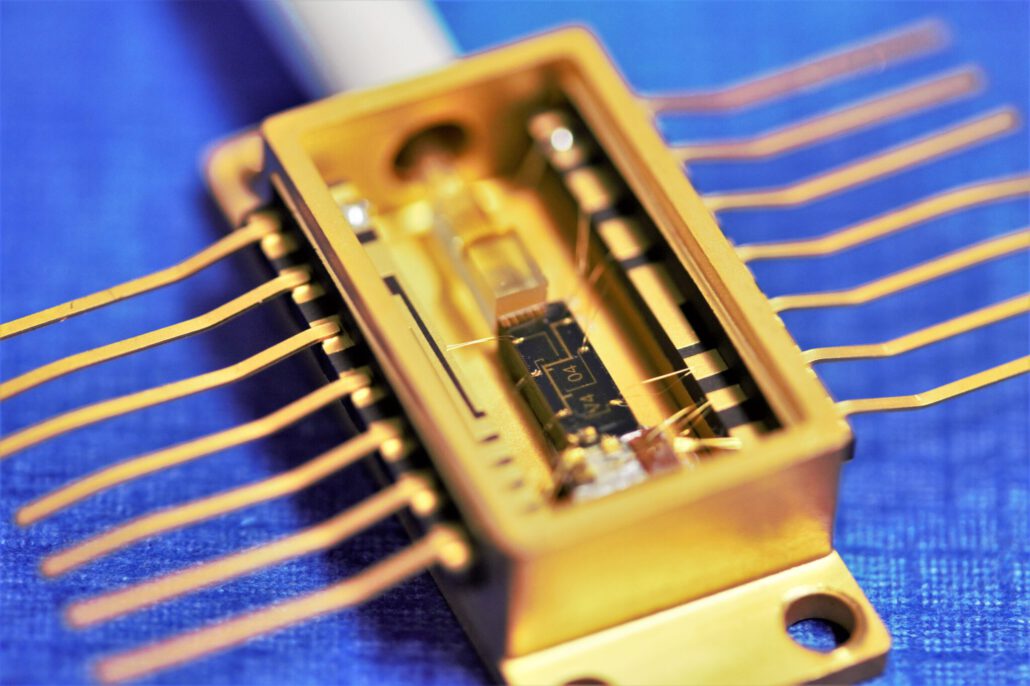Seeing more with a tunable laser in the Near Infrared range
In collaboration with our consortium partners at project REAP, we have developed an on-chip, ultra-narrow linewidth tunable laser addressing the lower ranges of near infrared. The laser was presented in a paper at Photonics West 2023, featuring 22 kHz linewidth, 45 nm tuning range, 5 dBm output power, and -40 dB SMSR.
Hybrid integration for an external cavity Vernier laser
The laser is deceptively simple: a semiconductor optical amplifier attached to our TriPleX® chip, feeding directly into a fiber array. The power of the laser comes from the cleverly integrated circuit, which includes a Vernier filter implemented on our platform with two tunable microring resonators. A Mach-Zehnder interferometer is also included, to tune the output coupling efficiency.
To ensure thermal stability for long-term use, the laser includes a negative temperature coefficient thermistor, mounted on the photonic integrated circuit, and a thermo-electric cooler, placed in the 14-pin butterfly package. Thermal management, as well as the wavelength and output tuning, are electronically regulated with one of our in-house laser controllers, developed for use with our external cavity lasers.

Semiconductor optical amplifier
TriPleX® external cavity
Output fiber array
Wire-bonded package, pluggable into our tunable laser drivers
Fast tuning in a wide range
At the central wavelength of 800 nm, the device measured a maximum output power of 5 dBm with a minimum side-mode suppression ratio of -40 dB. On testing its operation over a full day, the output exhibited minimal drift and a constant package temperature of 25°C. The measured intrinsic linewidth of the light was 22 kHz, with sub kHz tuning speeds.
The circuit was fabricated using our 850 nm MPW service, utilizing lateral waveguide tapers to optimally connect the chip to the gain section and the output fiber. These interfaces can have optical losses as low as 0.3 dB at the gain side and 0.4 dB at the fiber side. Our TriPleX® platform also supports vertical waveguide tapers, which were not used in this prototype.
Publication details
The laser was first presented during the SPIE OPTO conference, a full recording of which can be found on the SPIE Digital Library. The paper can be directly accessed here.
This work was carried out as part of an EU-funded project, REAP, for early breast cancer detection.

LioniX International’s marketing & communications director, Sadoon graduated with an MSc in Nanotechnology from the University of Twente. When not at an exhibition or meeting industry partners, he can be seen around the offices with a silly hat on.


